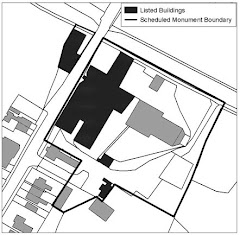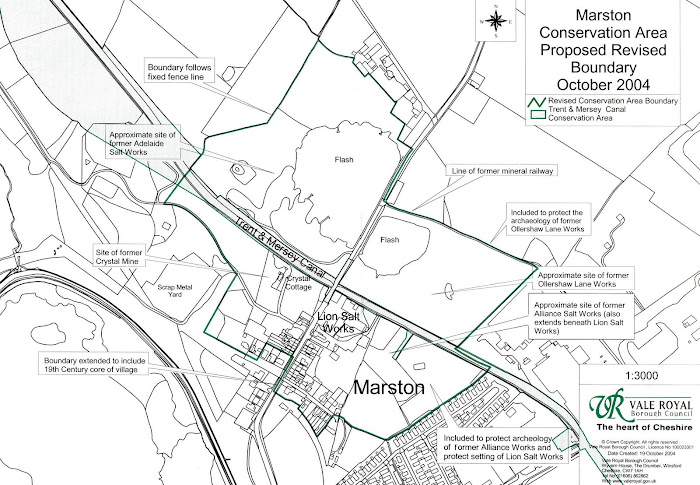 Within stove Hose 1 we had to chip out the remaining salt with a percussion hammer.
Within stove Hose 1 we had to chip out the remaining salt with a percussion hammer.The flue walls in this area have been robbed out many years ago but the remains of the walls indicate the layout of the flues and ditches which ducted the hot fumes from the Pan House to the chimney built on Ollershaw Lane.
 Meanwhile the big digger spent a fourth day removing the ash, cinders and flue walls from the dismantled Stove House 5.
Meanwhile the big digger spent a fourth day removing the ash, cinders and flue walls from the dismantled Stove House 5.Over 100 tons of material has been removed from site. The materials which made up the infill of the stove house were themselves waste products of the Lion Salt Works. Henry Thompson used waste cinders deposited at the south side of the site that were raked from the earlier pan houses over decades of salt making.
Alongside all the dismantling and removal of contaminants
 we are also being constructive and looking to the future. Sue Beesley and Isabel Brookes have begun the creative landscaping that will transform the south west corner of our salt works into a tranquil butterfly garden in partnership with George Martin and the Butterfly Conservation gardening volunteers.
we are also being constructive and looking to the future. Sue Beesley and Isabel Brookes have begun the creative landscaping that will transform the south west corner of our salt works into a tranquil butterfly garden in partnership with George Martin and the Butterfly Conservation gardening volunteers.














